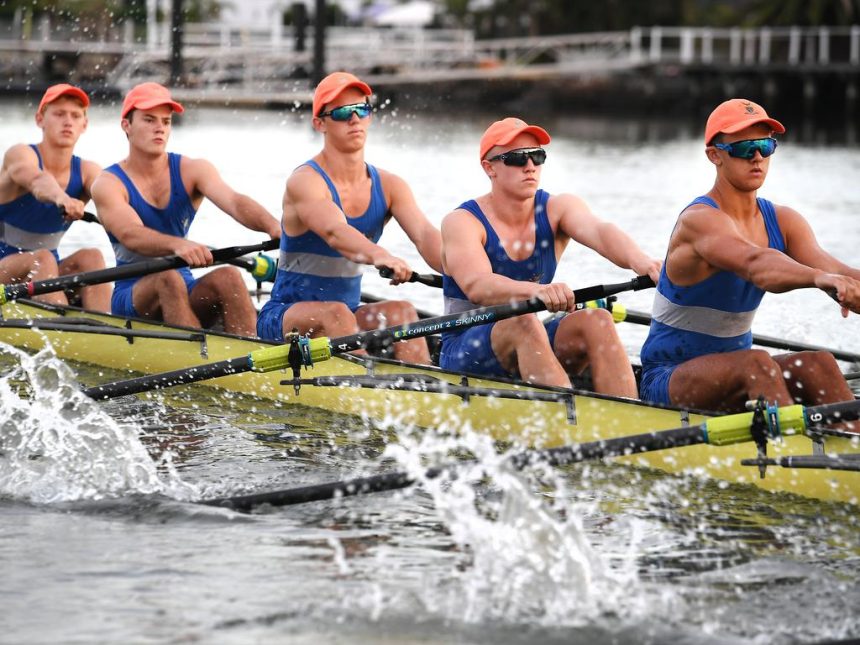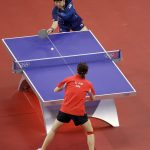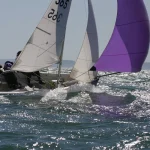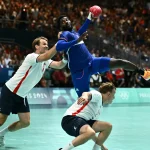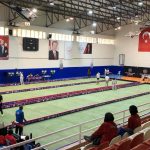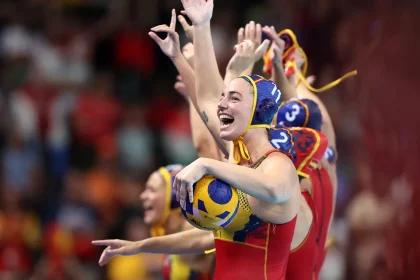Rowing, often referred to as “crew” in the United States, is a sport where athletes propel a boat (called a shell) across water using oars. It can be performed individually (single scull) or in teams of two, four, or eight rowers, with or without a coxswain—a person who steers and coordinates the crew’s rhythm. Rowing emphasizes strength, endurance, technique, and teamwork, making it both physically and mentally demanding. The sport is typically divided into two styles:
- Sweep Rowing: Each rower uses one oar, held with both hands, on one side of the boat (e.g., pairs, fours, or eights).
- Sculling: Each rower uses two oars, one in each hand (e.g., single, double, or quadruple sculls).
Competitions usually take place on calm water courses, often over a standard 2,000-meter distance for elite events, though shorter or longer races exist for various age groups and formats.
Why is Rowing Popular in the Global Sports Market?
Rowing’s popularity stems from several factors:
- Olympic Prestige: Rowing has been part of the modern Olympic Games since 1896 (men) and 1976 (women), drawing global attention. Its inclusion ensures visibility, funding, and participation across nations.
- Global Reach: Rowing is practiced in over 150 countries, with strong participation in Europe (e.g., UK, Germany), North America, Australia, New Zealand, and emerging scenes in Asia and South America. International federations like World Rowing (FISA) promote its growth.
- Inclusivity: Rowing appeals to diverse groups, including men, women, juniors, masters (age 27+), and adaptive athletes (para-rowing). This broad accessibility fuels participation.
- Teamwork and Individual Achievement: The sport combines collective effort in team boats with individual skill in sculling, attracting athletes who value both camaraderie and personal challenge.
- Elite and Amateur Appeal: Rowing thrives at both professional and recreational levels. Prestigious events like the Henley Royal Regatta and collegiate rivalries (e.g., Oxford-Cambridge Boat Race) coexist with community rowing clubs, making it accessible to all ages.
- Physical and Mental Benefits: Rowing is a full-body workout, improving cardiovascular health, strength, and endurance. Its rhythmic nature and outdoor setting also promote mental well-being, appealing to fitness enthusiasts.
- Cultural and Historical Significance: Rowing has deep roots in countries like the UK and US, with iconic events and traditions that sustain its popularity. Its association with elite institutions (e.g., Ivy League schools) adds a layer of prestige.
- Media and Sponsorship: While not as commercialized as soccer or basketball, rowing benefits from broadcast coverage of major events (e.g., Olympics, World Championships) and sponsorships, especially in developed nations.
Important Global Rowing Events
Key international rowing events showcase the sport’s competitive landscape:
- Olympic Games:
- Held every four years, the pinnacle of rowing.
- Features 14 events (7 men’s, 7 women’s), including eights, fours, pairs, and sculls.
- Next: Los Angeles 2028.
- World Rowing Championships:
- Annual event (except Olympic years) organized by World Rowing.
- Includes senior, under-23, and junior categories, plus para-rowing.
- Example: 2025 Championships in Linz-Ottensheim, Austria (August 10-17).
- Henley Royal Regatta (UK):
- Founded in 1839, one of the most prestigious regattas.
- Held annually in July on the River Thames.
- Attracts international crews, from juniors to Olympians.
- The Boat Race (UK):
- Annual Oxford vs. Cambridge university race on the Thames.
- Held since 1829 (men) and 1927 (women), drawing global viewership.
- World Rowing Cup:
- A series of three regattas held annually (e.g., Varese, Italy; Lucerne, Switzerland).
- Serves as a lead-up to the World Championships or Olympics.
- Head of the Charles Regatta (USA):
- World’s largest two-day regatta, held in Boston every October.
- Features thousands of rowers across age groups and skill levels.
- European Rowing Championships:
- Annual event for European nations, often a testing ground for Olympic hopefuls.
- Example: 2025 event in Belgrade, Serbia.
- Masters and Coastal Rowing Events:
- World Rowing Masters Regatta: For athletes 27+, emphasizing lifelong participation.
- World Rowing Coastal Championships: Held on open water, gaining popularity for its challenging conditions.
How Can Athletes (Young or Old) Participate in Rowing?
Rowing is accessible to beginners and seasoned athletes alike, with pathways for all ages:
For Young Athletes (Juniors, Ages 12-18):
- Join a Local Club or School Program:
- Many countries have junior rowing programs at high schools or community clubs. Check with local rowing federations (e.g., USRowing, British Rowing) or World Rowing’s club finder (www.worldrowing.com).
- Example: In the US, programs like Row New York or Seattle Rowing Center offer youth training.
- Learn-to-Row Programs:
- Most clubs offer beginner camps or classes to teach basics like technique, boat handling, and safety.
- No prior experience is needed; many clubs provide equipment.
- Compete Locally:
- Start with regional regattas (e.g., junior leagues or school championships).
- Progress to national events like the USRowing Youth National Championships or British Rowing Junior Championships.
- Aim for International Competition:
- Top juniors can qualify for the World Rowing Junior Championships (ages 18 and under).
- Selection often requires trials or strong performances at national events.
- Collegiate Pathway:
- In countries like the US, rowing can lead to college scholarships (e.g., NCAA programs at Stanford, Yale).
- In the UK, university rowing (e.g., Oxford, Cambridge) is a stepping stone to elite levels.
For Adults (Beginners or Masters, Ages 19+):
- Join a Rowing Club:
- Most cities near water have clubs offering adult programs, from recreational to competitive.
- Example: Vesper Boat Club (Philadelphia) or London Rowing Club (UK).
- Try Learn-to-Row Sessions:
- Clubs often host open days or short courses for adults. No fitness or experience prerequisites are required, though general fitness helps.
- Participate in Masters Rowing:
- For ages 27+, masters rowing is highly popular, with categories based on age (e.g., 27-36, 36-43, etc.).
- Compete in local regattas or aim for the World Rowing Masters Regatta, which welcomes all skill levels.
- Explore Coastal or Recreational Rowing:
- Coastal rowing (on open water) or touring rowing (long-distance) offers less competitive options.
- Events like the World Rowing Coastal Championships are open to amateurs.
- Adaptive Rowing (Para-Rowing):
- Athletes with disabilities can join para-rowing programs, supported by World Rowing.
- Compete in events like the Paralympics or World Championships.
Steps to Compete Globally:
- Develop Skills and Fitness:
- Train regularly (on-water or ergometer) to build technique, endurance, and strength.
- Work with coaches to refine stroke efficiency and race strategy.
- Compete at National Level:
- Enter national championships or trials to gain recognition.
- Example: USRowing National Selection Regatta or Rowing Australia’s trials.
- Join National Teams:
- Elite performers are invited to national training camps or trials for Olympic or World Championship squads.
- Requires consistent top performances and often ergometer (indoor rowing) test scores (e.g., 2,000m time).
- Work with Federations:
- Contact your national rowing federation for guidance on selection criteria and funding (e.g., British Rowing, Rowing Canada).
- World Rowing provides resources for international pathways (www.worldrowing.com).
Practical Tips for All Ages:
- Equipment: Clubs typically provide boats and oars; personal gear includes athletic clothing and water shoes.
- Cost: Club memberships vary ($50-$500/year), with learn-to-row programs often $100-$300 for a course. Scholarships or subsidized programs exist for juniors.
- Fitness: Beginners should focus on cardiovascular fitness and core strength. Indoor rowing machines (ergometers) are great for training.
- Safety: Learn water safety and follow club protocols, especially for beginners.
- Networking: Attend regattas or camps to connect with coaches and athletes, opening doors to higher-level opportunities.
Additional Notes
- Challenges: Rowing requires access to water and equipment, which can limit participation in landlocked or less affluent areas. However, indoor rowing and virtual competitions are expanding access.
- Growth Areas: Asia (e.g., China, Japan) and Africa (e.g., South Africa) are seeing increased investment in rowing, supported by World Rowing’s development programs.
- Resources: Follow World Rowing’s website, social media (@WorldRowing), or national federations for event schedules, training tips, and club directories.
For specific guidance, share your location or goals, and I can tailor recommendations (e.g., nearby clubs or upcoming events). Would you like me to search for local rowing opportunities or analyze a specific event/athlete profile on X?




